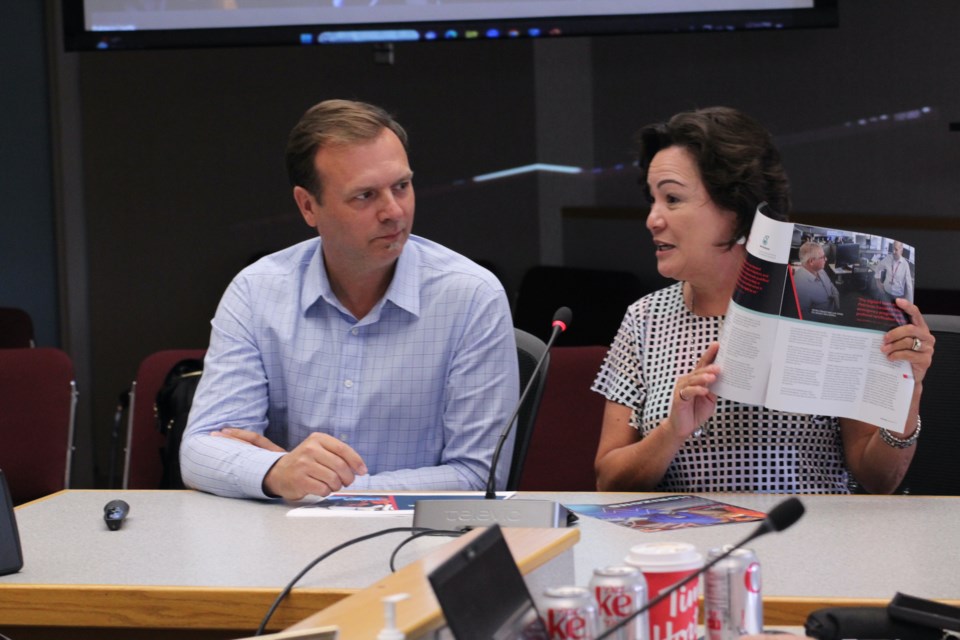ATHABASCA – Athabasca County councillors got a chance to see what the municipality’s contributions are going towards at STARS, which has changed its slogan to signify a small expansion to what the air ambulance service provides.
Councillors voted 8-0 — Coun. Kelly Chamzuk was absent — to accept the July 27 STARS presentation as information, after Glenda Farnden, STARS senior municipal relations liaison, and Jon Gogan, the provincial operations director for northern and central Alberta, got the chance to showcase some of the new things the organization is working on.
“After 38 years of serving Albertans, STARS is going through a bit of a rebrand. You’ll notice a slightly different logo,” said Farnden. “We’ve always been about saving lives, but now we want to take it one step further with all the latest in technology. We are looking forward to providing critical care, anywhere.”
At the end of 2022, the provincial government increased its contribution, bringing them in-line with Saskatchewan, although still lower than Manitoba — there are six bases spread across the prairie provinces, with three in Alberta.
“It costs us about $10 million a year to run our bases in Grande Prairie, Edmonton and Calgary,” said Farnden. “The province contributing the $15 million is just about equal to half our operating costs for the year, which was the goal.”
Farnden did have a small ask as currently Athabasca County is contributing less than $2 per capita, which is the amount that STARS looks for from each municipality. The county contributes $10,000 a year, and while it is a fixed item in the budget, Farnden was hoping they would be able to increase it. STARS generates about $2 million a year from municipal donations provincially, which Farnden says helps offset the rising costs.
“We would like to ask if there was any consideration to moving to a fixed rate that would round up to at least $2 per capita requirement that the majority of all municipalities are contributing at. Other than that, we appreciate the fact that you’re on standing motion, so we aren’t getting forgotten as things change, that is pertinent to our sustainability. We appreciate your support.”
Lives saved
Gogan was able to share some stats with councillors about the successes of STARS; besides his role as a director, Gogan has also been a pilot with STARS for 22 years.
“Since 2018 we’ve flown 128 missions in your region. We wish it was zero but that isn’t the life we live day to day,” said Gogan. “We certainly saw an uptick during COVID, with one in every four missions being directly related to transporting someone with COVID.”
The “downstream” effects of the pandemic are still in effect — Gogan said that they were starting to notice them in 2022, and that trend continued into 2023. He also added that crews are finding themselves in violent situations more commonly than they were before.
“You name it we’re seeing it,” said Gogan. “A number of our members are going through training to try and deescalate, since we’re finding that the exterior situations when we arrive on scene calls are often more violent than we have seen in other years.”
Beyond the 128 missions flown in Athabasca County, STARS flew an additional 337 missions in neighboring areas: 116 in Westlock County, 47 in the MD of Lesser Slave River, 21 in the MD of Opportunity, 52 in Lac La Biche County, and 101 in Smoky Lake County.
Reeve Brian Hall thanked the two for their presentation, noting that they would revisit the contribution during their next set of budget meetings.
“Healthcare has been on our agenda since the beginning of our term, and I want to thank you on behalf of council for what you do to deliver critical care to rural Alberta. When we are short ambulances the ability to get your services in and out is pretty powerful,” said Hall.



